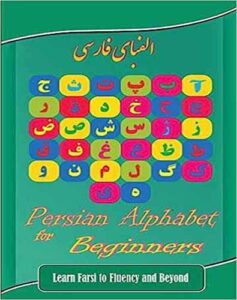Table of Contents
ToggleLearning Persian
Learning Persian, also known as Farsi, can open up a rich culture, history, and literature world. Whether you’re interested in Persian poetry, planning to travel to Iran, or looking to connect with Persian-speaking friends and family, mastering the Persian language is rewarding. This comprehensive guide provides practical strategies and resources to help you learn Persian, from the basics to advanced proficiency.
Persian is an Indo-Iranian language spoken primarily in Iran, Afghanistan (Dari), and Tajikistan (Tajik). It has a unique script and a rich literary tradition, making it an intriguing language to study. With dedication and the right approach, you can become proficient in Persian and enjoy its many benefits.
Understanding the Persian Alphabet
Learn the Persian Script
The first step in learning Persian is mastering the Persian alphabet. The Persian script is a variant of the Arabic script and consists of 32 letters. Each letter has different forms depending on its position in a word (initial, medial, final, or isolated). Practice writing each letter and familiarize yourself with their various forms.
Pronunciation and Phonetics
Focus on the pronunciation of each letter and sound in Persian. Persian has several sounds that may be unfamiliar to English speakers, so it’s important to practice listening and repeating these sounds. Online resources, language apps, and pronunciation guides can be helpful tools.
Basic Persian Vocabulary and Phrases
Common Words and Phrases
Start by learning common Persian words and phrases that you can use in everyday conversations. Greetings, introductions, and basic questions are good starting points. For example:
- Hello: سلام (Salam)
- How are you?: حال شما چطور است؟ (Haal-e shomaa chetore?)
- Thank you: ممنون (Mamnoon)
Building a Vocabulary Base
Expand your vocabulary by learning words related to different themes, such as family, food, numbers, and common objects. Flashcards, language apps, and vocabulary lists can be useful for memorizing new words.
Grammar and Sentence Structure
Basic Grammar Rules
Understand the basic grammar rules of Persian, such as sentence structure, verb conjugation, and the use of prepositions. Persian sentences typically follow a Subject-Object-Verb (SOV) order. For example:
- I love you: من تو را دوست دارم (Man to ra doost daram)
Verb Conjugation
Learn how to conjugate Persian verbs in different tenses. Start with the present simple tense and gradually move on to past and future tenses—practice conjugating common verbs and using them in sentences.

Improving Speaking and Listening Skills
Engage in Conversations
Practice speaking Persian as much as possible. Engage in conversations with native speakers, language exchange partners, or fellow learners. Join language learning groups or find a conversation partner online.
Listening Practice
Improve your listening skills by immersing yourself in Persian media. Listen to Persian music, watch Iranian movies and TV shows, and follow Persian podcasts. This exposure helps you get accustomed to the natural flow and pronunciation of the language.
Reading and Writing in Persian
Reading Practice
Start with simple texts, such as children’s books or short stories, and gradually progress to more complex material. Reading Persian newspapers, blogs, and literature can also enhance your comprehension skills. Pay attention to new vocabulary and sentence structures.
Writing Practice
Practice writing in Persian by keeping a journal, writing short essays, or composing letters. Focus on using correct grammar and expanding your vocabulary. You can also participate in online forums or social media groups using Persian.
Utilizing Language Learning Resources
Language Apps and Online Courses
There are many language learning apps and online courses designed to teach Persian. Apps like Duolingo, Memrise, and Rosetta Stone offer structured lessons and practice exercises. Online platforms like Coursera and Udemy provide comprehensive courses taught by experienced instructors.
Books and Study Guides
Invest in Persian language textbooks and study guides. Books like “Teach Yourself Persian” or “Complete Persian” offer detailed grammar, vocabulary, and pronunciation lessons. These resources often include exercises and audio materials for practice.
Language Exchange and Immersion
Language Exchange Programs
Participate in language exchange programs where you can practice Persian with native speakers while helping them learn your language. Platforms like Tandem, HelloTalk, and ConversationExchange connect language learners worldwide.
Travel and Immersion
If possible, travel to a Persian-speaking country to immerse yourself in the language and culture. Living in an environment where Persian is spoken daily provides invaluable practice and accelerates your learning process.
FAQs
What is the best way to start learning Persian?
The best way to start learning Persian is by mastering the Persian alphabet and basic pronunciation. Begin with common words and phrases, and gradually build your vocabulary and understanding of grammar.
How can I improve my Persian speaking skills?
To improve your Persian speaking skills, converse with native speakers, participate in language exchange programs, and practice speaking regularly. Immersing yourself in Persian media and culture also helps.
Are there online resources for learning Persian?
There are many online resources for learning Persian, including language-learning apps, online courses, and websites. Platforms like Duolingo, Memrise, and Coursera offer structured lessons and practice exercises.
How can I enhance my Persian listening comprehension?
Enhance your Persian listening comprehension by listening to Persian music, watching Iranian movies and TV shows, and following Persian podcasts. Regular exposure to spoken Persian helps you get accustomed to the natural flow and pronunciation.
What are some practical ways to practice Persian writing?
Effective ways to practice Persian writing include keeping a journal, writing short essays, and composing letters. Participate in online forums or social media groups where Persian is used to practice writing in real-life contexts.
Is traveling to a Persian-speaking country beneficial for learning the language?
Yes, traveling to a Persian-speaking country is highly beneficial for learning the language. Immersion in an environment where Persian is spoken daily provides invaluable practice and accelerates your learning process.
Learning Persian is a rewarding journey that opens up a rich cultural and literary heritage. You can achieve proficiency in the language by mastering the Persian script, building your vocabulary, understanding grammar, and practicing speaking, listening, reading, and writing. Utilize the available resources, engage with native speakers, and immerse yourself in the language to make your learning experience enjoyable and effective.







